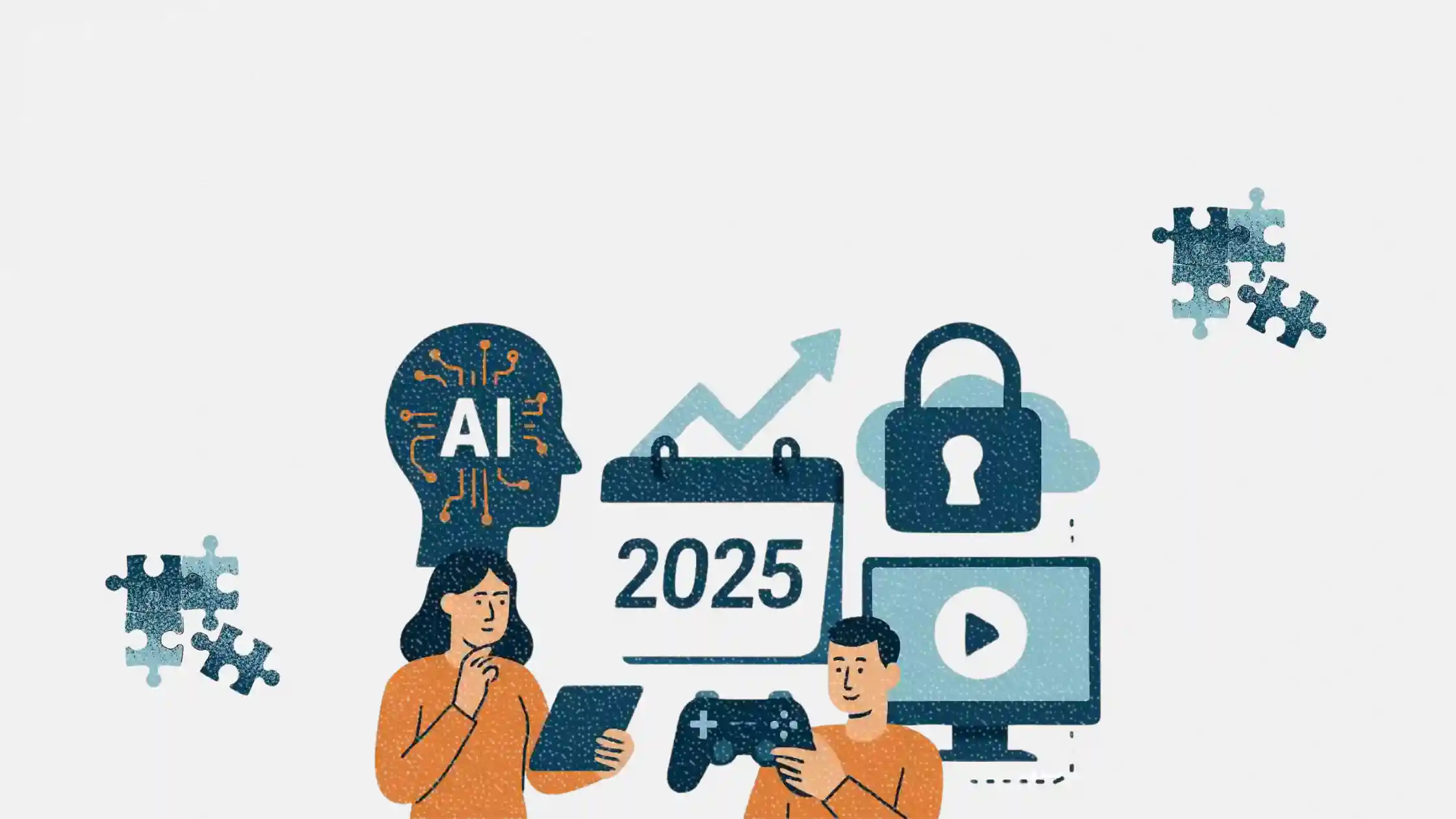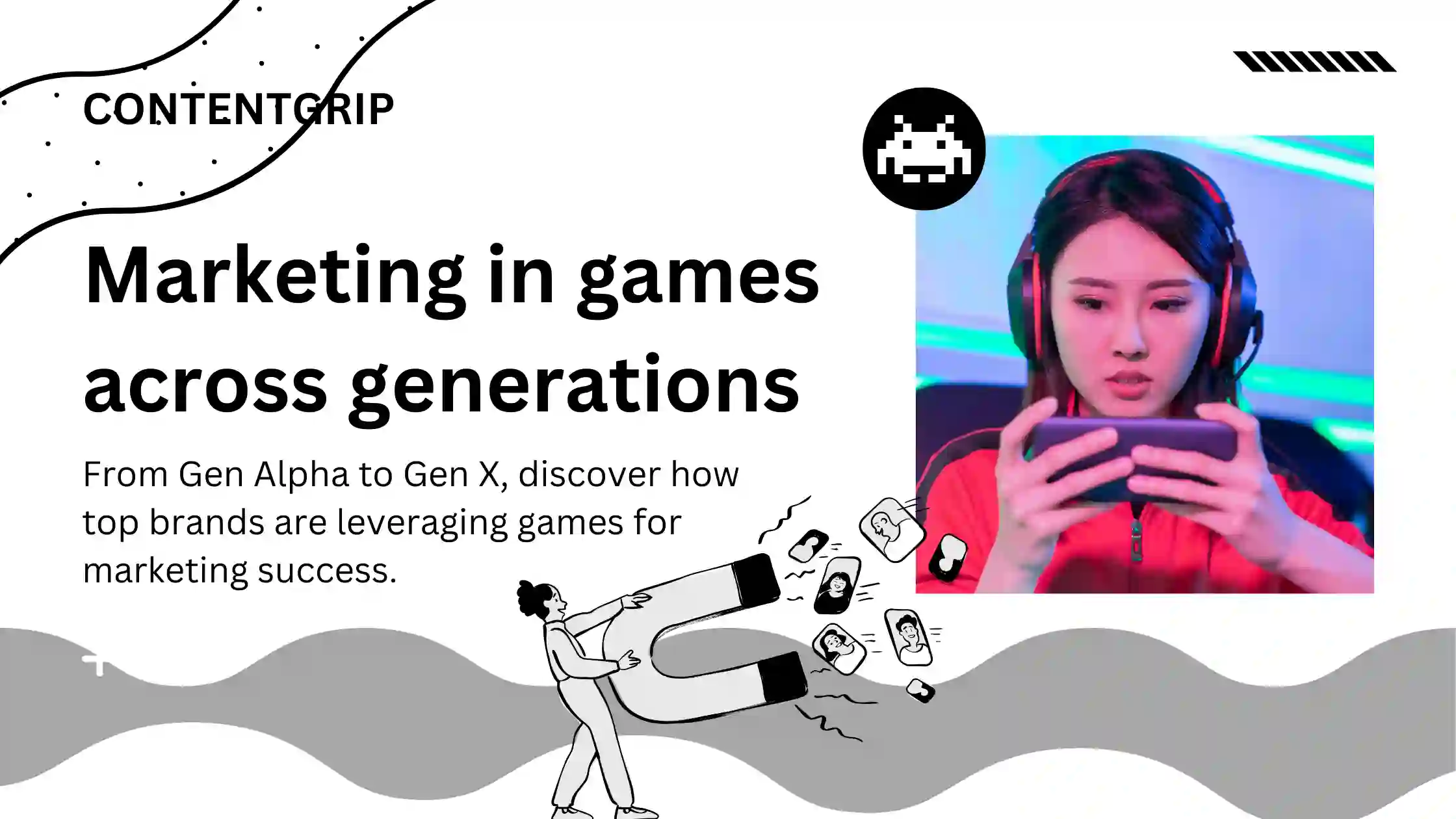What’s next for marketers in 2025? AI trust, privacy pivots, and the rise of gamevertising
From AI ethics to browser shakeups, this is your Q2 cheat sheet for staying ahead in marketing.

As we settle into Q2, it's clear that early marketing predictions for 2025 weren’t just noise—they’ve become strategic north stars.
From AI to privacy, marketers are already navigating seismic shifts in how brands connect with digital audiences.
This article explores four new and urgent trends shaping the marketing landscape right now. Grounded in evolving consumer expectations, fresh platform updates, and accelerating tech innovation, these predictions are designed to help you future-proof your strategy—while your competitors are still catching up.
Short on time?
Here’s a quick summary:
- 4 new emerging marketing trends this 2025

4 new emerging marketing trends this 2025
While some 2025 predictions have already played out, a fresh wave of disruptive trends is just starting to surface. These aren’t hype cycles—they’re grounded in real shifts in consumer behavior, platform dynamics, and tech innovation that are actively reshaping the marketing playbook.
From AI ethics to gamified brand worlds, here are four trends that forward-thinking marketers should get ahead of—before they go mainstream.
1. AI ethics campaigns enter the spotlight
In 2025, AI isn’t just powering campaigns—it’s also under ethical scrutiny. Consumers and regulators alike are demanding transparency, prompting a growing number of brands to center their marketing on responsible AI use.
Whether it’s Adobe emphasizing AI transparency as a brand trust anchor¹ or companies adding “AI disclosure tags” to creative outputs, the message is clear: ethical AI is no longer optional. A recent report showed that 65% of consumers trust brands more when they disclose AI usage²—a compelling reason to lead with ethics, not just efficiency.
What marketers should do:
- Include AI disclaimers in creative and copy.
- Publish transparency reports or ethics statements for AI-driven campaigns.
- Use ethical AI badges or icons to signal credibility.
2. Email marketing faces new privacy headwinds
The privacy wave is here—and it's not letting up. Apple’s Mail Privacy Protection (MPP)³ and Google’s tightening standards continue to wreak havoc on email open rate reliability. Open tracking is now so inflated it’s functionally useless for most marketers.
As privacy rules tighten and tracking becomes harder to rely on, marketers are also reviewing their cybersecurity tools to ensure customer data stays protected across every touchpoint.
To adapt, savvy brands are shifting their KPIs: leaning on click-through rates, on-site behavior, and zero-party data (voluntarily shared user info). Tools like AMP emails, dynamic preference centers, and lead magnets with genuine value are replacing outdated engagement strategies.
What marketers should do:
- Prioritize clicks and on-site behavior over opens.
- Launch preference centers for tailored email experiences.
- Offer high-value, permission-based lead magnets to gather first-party data.
- Stop obsessing over openings.
3. Browser competition heats up
Chrome still reigns⁴ but we’ve seen signs of it possibly losing its dominance due to challengers like Brave, Arc, and AI-integrated search browsers that are gaining real ground. Brave now boasts 82.7 million monthly active users⁵, thanks to its robust privacy settings and ad-blocking features.
This resurgence of browser choice is reshaping how marketers think about ad targeting and analytics. With third-party cookies vanishing and privacy-first browsers on the rise, tactics like server-side tagging, contextual advertising, and first-party data strategies are no longer nice-to-haves—they’re essential.
What marketers should do:
- Implement server-side tagging for cleaner analytics.
- Develop contextual ad campaigns with minimal reliance on tracking.
- Monitor browser usage shifts among your core audience.
- Revisit your attribution model
- Embrace cookieless tracking
4. Gaming becomes the next big marketing frontier
In-game marketing is no longer niche. With 3.32 billion global gamers⁶ and a projected US$11.02 billion in in-game ad spend by 2025⁷, this channel is becoming essential for brands targeting Gen Z and Alpha.
We’re seeing rapid innovation: branded characters in Roblox, virtual events in Fortnite, and even indie game collaborations that weave product placement into the narrative itself. Plus, a staggering 93% of media buyers plan to run in-game ads this year⁸.
What marketers should do:
- Explore collaborations with game publishers or indie developers.
- Invest in branded in-game experiences or events on platforms like Roblox.
- Experiment with interactive storytelling formats to increase brand immersion.
- Start thinking like a game developer

Final thoughts: get ready for what’s next
2025 is already proving that agility is more valuable than ever. Marketers who adapt early—whether by prioritizing AI transparency, ditching outdated email metrics, or embedding their brand in virtual worlds—stand to gain significant ground.
Stay curious. Stay flexible. And start testing these strategies now—before your competitors turn predictions into playbooks.
Sources
- TechRadar. (2025, April 20). Want to build an AI strategy? Adobe SVP advises you start with transparency. https://www.techradar.com/pro/want-to-build-an-ai-strategy-adobe-svp-advises-you-start-with-transparency/
- Stewart Townsend. (2025, February 22). AI in Marketing: Ethical Dilemmas and Privacy Concerns for 2025. https://stewarttownsend.com/ai-in-marketing-ethical-dilemmas-and-privacy-concerns-for-2025/
- Emailtootester. (2025, February 13). Apple MPP Open Rate Tracking: Which ESPs Provide The Most Accurate Reporting. https://www.emailtooltester.com/en/blog/apple-mpp-open-rate/
- TechJury. (2025, April 16). Chrome Browser Market Share in 2025: Still Leading, But for How Long?. https://techjury.net/industry-analysis/chrome-browser-market-share/
- TapTwice Digital. (2025, March 28). Market Share, Users, Popularity. https://taptwicedigital.com/blog/brave-usage
- Exploding Topics. (2025, April 24). How Many Gamers Are There? (New 2025 Statistics). https://explodingtopics.com/blog/number-of-gamers
- The Business Research Company. (2025, January). In-Game Advertising Global Market Report. https://www.thebusinessresearchcompany.com/report/in-game-advertising-global-market-report
- Passive Secrets. (2024, July 14). The Future of Advertising is in the Game: Latest In-Game Advertising Statistics 2024. https://passivesecrets.com/in-game-advertising-statistics/





